This is part two of a series about how our family came to set off on an adventure of a lifetime so many years ago when we sailed around the world aboard La Gitana. You can read the first part about how the dream unfolded at Falling in Love and Sailing around the World - A Dream Come True
The following was first published in Latitude 38, a popular sailing magazine, while we were still living board La Gitana. It tells about about the first two years of our journey and how our children—eight and 11 when we took off—adjusted to life at sea. I’m reprinting it here, with slight changes, as part two of a series about our six and a half year circumnavigation aboard our sailboat.
Cruising with Kids–Dream or Nightmare?
It was the last day of our garage sale and I was happily breezing through the house directing potential buyers to the last of the hanging plants and paintings. Within the week we would move aboard La Gitana, our 46-foot Formosa, preparing her for our long-awaited cruise to Mexico and the South Pacific. I was so excited by the prospect that I almost didn’t notice Kelli, our eight-year-old daughter, when she came into the family room and stood staring at the empty walls as if stunned.
“I thought it was only a dream!” she whispered, then burst into tears.
It was “only a dream.” A dream-come-true for Dale and me. But for our children, it may have seemed more of a nightmare as they watched the bits and pieces of their lives being hauled away by strangers.
A year of patiently hand-feeding them tales of sailing off to tropical isles where they could swim, snorkel, and fish every day was rapidly losing its influence. When tasted with the very bitter sacrifices that were being required of them, such tales did not seem so sweet.
Our decision to go cruising had been playing in the backs of our minds since we were first married. We decided then that “someday,” when the children were the “right” ages, when we were financially able to leave on an open-ended cruise, we would leave for the South Pacific. Ultimately, our dream was to sail around the world.
But it took an idyllic bareboat charter in the Caribbean some ten years later to finally budge that dream into reality. We realized that our children, then seven and ten, were the perfect ages for living aboard a boat. And with a little reshuffling of the financial deck and a lot of belt-tightening, we could just about squeeze by on that open-ended clause.
After all, if we didn’t go now, when would we? We could wait until the children were grown, but how could we deprive them of such an adventure? And who could wait that long anyway?
Dale and I spent many happy hours convincing ourselves that what we were offering the children in a life at sea would more than compensate for the things they would be giving up. We thought of the wonderful experience of traveling, the great cultural and environmental education, the challenges and opportunities for self-development. It all sounded so good, so true, and yet, a perverse thought kept plaguing me: Was it perhaps “too good to be true”? I began to consider the darker side of life at sea.
Drastic Life-Style Changes
Simply moving aboard a boat and sailing off into the world would require some drastic lifestyle changes quite apart from the obvious benefits. The mere logistics of gathering the four corners of our large suburban home and dropping it into a space smaller than our family room required some creative mental maneuvering. Trying to envision some semblance of tranquility and order within such a jumble seemed beyond the stretch of my imagination.
Could the four of us truly be happy living together in such close quarters? Wouldn’t the lack of space and privacy release hidden demons within us that would turn our cruising dream into a nightmare?
Even the prospect of eliminating the simple luxuries we now took for granted to accommodate the frugal lifestyle we were contemplating took on new ominous dimensions. While it seemed we ought to be able to live happily ever after without the benefits of hot showers, a cold fridge, a washing machine and TV, what if we couldn’t? Who knew what trivial monkey-wrench could throw the whole dream askew?
One of my secret fears was that we might all become extremely bored with our cruising life. Would nothing but bright skies, warm seas and white sand, day after day, week after week, month after month, eventually become tedious? After all, just how much swimming, fishing and snorkeling could one endure?
Chief among our concerns about the sailing life, and certainly the one most on the minds of the grandparents, was the question of safety. Were we being irresponsible in taking the kids off into the unknown dangers long-distance cruising entailed? Who knew what deadly storms or hurricanes, shark and appendicitis attacks, pirates or revolutionaries we would encounter?
Then there were their social lives to consider. Our children never seemed so happy as when they had hordes of kids to play with. Surely it was grossly unfair to deprive them of their peers and the opportunities and enjoyment that organized sports and recreations offered. Often, I found myself closely watching my two children as they moved about their daily activities—the very activities of which we would soon deprive them.
Christopher, at eleven, was fully enmeshed in that preadolescent social scene of soccer and baseball, skate boarding and video-games. It was a lifestyle in which he felt quite comfortable, and even while Dale and I felt that the life we were offering him was better, the question remained: Would he think so, say ten years down the line? Or would he feel cheated of the normal activities of adolescence?
At eight years old, Kelli’s life was so much simpler, and yet such simplicity seemed all the more wretched to deprive her: doll houses and baby cribs, roller skates and her first two-wheel bike, gymnastic classes and tap dance lessons. Was she a budding ballerina whose career was being cut to the quick? What other new talents and skills would be left unplumbed as we dragged her away from future softball games, piano lessons and Girl Scout activities? Really, just how much were we truly asking our children to give up in order to accommodate our dream?
With Kelli’s tears that bright June morning, all these questions and doubts came bubbling back to the surface, bringing into sharp focus our quandary: would this cruising life that Dale and I so clearly envisioned reach in reality the expectation of our dreams; or would it fray somehow and wear thin under the wear and tear of everyday living, dissolving into the nightmare our children half-expected?
The trouble was that we would never know until we had lived it. And to Dale and me, regardless the outcome, this life we so clearly envisioned seemed worth the effort and the risk. We had this singular opportunity to draw together as a family and pit our strengths, our skills, and our spirits against an unknown life and, just perhaps, come out the better for it. It was a chance we could not pass up.
Sailing Into the Unknown
So amid tears and protests, we moved aboard La Gitana where she lay patiently at her slip in Ventura, California. There Dale and I gave up the roomy aft cabin to the children with their collections of stuffed animals, Barbie dolls and Star War Empires. Then we settled back to await the inevitable bouts of tears and sulkiness that must accompany this new adjustment period in our lives.
But it never happened. Chris was too busy learning to sail our dinghy, while Kelli was totally enchanted with her new, tiny inflatable and happily rowing off backwards to visit new-found friends living at the marina.
Soon surfing and boogie boarding became the favored past-time, and the children were heaving boards to heads and going off to explore the waves together.
By the time January and our much delayed departure date rolled around, the children had made new lives and new friends for themselves at the marina. But there were no tears at departing this time—they were as ready to head out as we were.
Already they had learned that they could adapt to a new environment and make their own places in it, wherever that place might be. This easy acceptance of and adjustment to the cruising life continued.
We spent two delightful weeks at Catalina Island before heading further south. Even in that short time, the children’s sense of independence and self-reliance increased as they rowed themselves ashore each day to explore the little town of Avalon by themselves or took their places at the fishing dock among all the old-timers there.
Chris became so adept at working the oars of our ten-foot dingy that he became the family’s official rower. Whenever we went ashore together, it was his strong back and broad smile that transported us there.
I’ll never forget one twilit evening when Kelli offered to row the trash ashore, and, despite my doubts, Dale said she could handle it. I watched, transfixed, as my little eight-year-old daughter heft the large bag into our ten-foot dingy, untied the painter and shoved off, manning the heavy wooden oars that I myself had trouble with. She rowed, not backwards this time, but like a good seaman with her back to the future as the gathering twilight slowly hid her from view. Kelli won more than a bit of independence that day—she won respect and admiration, for she rowed a straighter course than I could.
By the time we reached Cabo San Lucas and rounded the tip of Baja into the Sea of Cortez, we had discovered that many of the trivial concerns that once loomed so large in our minds had disappeared. Now it’s hard to imagine why we once thought that lack of privacy or cramped quarters would become a problem.
Life Aboard La Gitana
Our forty-six foot Formosa with its large center cockpit and forward and aft cabins has provided us with all the privacy and living space that we seem to need. We live as peaceably here as we did in our house and perhaps more so. Not only are our cramped quarters not a problem, but they have often proved a blessing.
Now when the children bring the Legos out to the salon table to build spaceships, Dale or I are often drawn into the creative enterprise. And it is easy to supervise school lessons from the galley while in the midst of kneading sourdough or canning chicken.
Then, when we do need that time to “be by ourselves,” we’ve found that cooperation rather than space is the prime factor. And cooperation is readily available. Why we once thought otherwise seems a mystery now.
The simple luxuries of a daily shower, a washing machine and TV are no longer missed. While the privacy of a good, hot shower is still a luxury we would readily welcome, we’ve found that it’s only just that—a luxury, not a necessity. Its absence does not affect the quality of life or well-being in the least.
Fresh water sponge baths and sea-bucket showers are enough to keep us feeling as fresh and clean as the humidity permits. Then, when we are in a port where fresh water is plentiful, nothing compares with a fresh-water sun shower during the heat of day or within the warm caress of a starry night.
I’ve discovered that washing laundry in buckets of salt water and rinsing them in fresh keeps our clothes as clean and soft as they need to be. It is not the drudgery I anticipated. At the house, doing laundry was always a tedious task performed alone in the semi-gloom of our garage. Now I do the laundry in a bikini on the bow of the boat with the brilliant sunshine and wind refreshing my spirits while panoramic views of busy harbors or lovely anchorages enchant my mind. And never am I a lone. There is always Chris to haul up buckets of water for me, Dale to help rinse and wring, and Kelli to hang the clothes on the life lines.
The absence of TV has been one of our greatest blessings. It opened the fascinating world of books to our children who, until we began cruising, seldom read for fun. We were only a week into our cruise when Chris, quickly drying the last of the dishes so I could begin our nightly reading session of The Hobbit, exclaimed, “This beats watching TV any day!” And this from a boy who had suffered the cruelest deprivation of his life only months before when we cut the cable to MTV.
Since we’ve been cruising, I’ve ceased to worry about depriving the children of their involvement in organized sports and clubs. We’ve found that this life at sea provides ample opportunities for developing skills, independence and self-reliance that more than compensate for that lack. These cruising activities are more holistic, as well, encompassing many aspects of a single theme.
Fishing, for example, has become a favored past-time for the children, but this passion involves far more than casting a line into the sea. Each child catches and salts down his own bait, rigs and cares for her own poles, then cleans and fillets his own catch. They both spend many enjoyable hours making lures out of feathers, bits of colored string, and other odds and ends.
Chris, especially, actively seeks out and devours any magazine or book on sport fishing that he can find, and he spends hours pouring through our charts and cruising guides, looking for the best fishing and diving spots.
Our fish identification book has been worn to tatters by constant perusal. Even the children’s artwork includes many finely detailed and colored drawings of the fish they admire.
In the cruising life, many of the skills the children learn provide as much practical use as they do play. Rowing, sailing, and working the outboard motor are not only fun but are the children’s main means of transportation to and from shore. Swimming, snorkeling, and diving provide excellent recreation as well as dinner.
Chris has become quite proficient at hunting and spearing fish and lobster, often free-diving to thirty feet to stalk a grouper or free an anchor. Kelli’s snorkeling and diving produces clams and scallops for supper, as well as a myriad of pretty shells for creating jewelry.
To be sure, a cruising life does provide less opportunity for the children to play with their own peers, but even this lack has its compensations. The children have been forced to seek companionship in unexpected places, including each other. Their many expeditions to shore to explore the beaches and towns together has fostered a growing sense of responsibility, cooperation, protectiveness and consideration between the two. People often comment on how close they seem to be—comments rarely merited in the highly separate lives they led ashore.
In addition, both children have become quite adept at striking up friendships with many of the adults they meet—not only other cruisers or vacationing Americans, but many of the local Mexicans as well. Some of these friendships have become special and lasting, while others led to unique experiences.
The children’s increasing command of Spanish has allowed them to become friends with some of the Mexican shopkeepers and fishermen and their children. In the process, the children have waited on tables, made signs in English, and helped out their friends in other small ways, as well as enjoyed several tours of local commercial fishing boats. One special friendship with a young American couple working down here led Chris to work and pay for his own diving instructions, allowing him to become a certified scuba diver at the age of twelve.
When the children do come into contact with other cruising children, these friendships tend to be swift and deep, bonded as they are by their shared, unique experiences. They are learning that friendships need not be limited to one’s own peer group or even to one’s own nationality but are to be nurtured and savored wherever they are found.
One of the very special aspects of the cruising life has been the increased opportunities for children and parents to play together. The few bouts with boredom aboard our boat have led to the discovery and sometimes rediscovery of enjoyable pursuits. I’ve discovered the joys of sewing when Kelli and I began to design and hand-sew doll’s clothes. Dale, who had always shunned playing cards or board games, now enthusiastically plays both with his family. The children’s love of drawing caused me to rediscover my own love for it and Dale to discover it for the first time. Most notable, I believe, is the rediscovery of the child within the adult, as Dale and I find an increasing sense of whimsy and nonsense pervading La Gitana.
It is not only the play and pleasures, however, that are shared aboard a cruising boat, but the work, the responsibilities, and the learning as well. Hauling water and fuel, shopping for groceries, laundering and cooking, mending and sewing, and scraping the hull are joint activities, shared by all to some degree. This includes sailing the boat. Chris and Kelli handle much of the foredeck work as well as anchoring now.
The Homeschooling Challenge
School, however, is our most challenging responsibility. I have been pleased with the quality and content of the Calvert correspondence lessons, but it has taken time for all of us to adjust to the children-as-pupils and mother-as-teacher relationship. Having taught school a bit in the past, I had no qualms about teaching my own children. However, I have since discovered that there is an emotional bond, or perhaps tension, between mothers and their children that does not exist in the normal classroom and does not facilitate the learning process.
It seems to make the goofing off and the squabbling, the stricter expectations and shorter tempers all the more prevalent. The children somehow feel much freer to criticize their own mother’s teaching standards and techniques than they ever did their former teachers. I, in turn, find my own children’s sloppy work habits and inattentiveness much more exasperating than I did with my former students.
Even normal shipboard activities seem to confound our best efforts to maintain schools discipline as Dale tears apart the salon looking for some tool while working on one of his own projects, or friendly neighbors row by for a chat. Underway there is always a herd of dolphin, a caught fish or a call to tack to upset our lessons. And yet, I keep reminding myself, isn’t this what we imagined maritime cruising to be all about—pitting ourselves against the unknown challenges in the world, in each other, and in ourselves, grappling with it and coming out the better?
And so, we’ve grappled with our schooling these past two years, and, in fact, have seemed to come out the better for it. School is now a much more orderly process. The disruptions still occur, but we’re learning when to be firm and when to be flexible. The children are learning to accept my higher standards, and I am learning to handle the highs and lows of teaching them with more equilibrium.
The satisfaction of personally supervising their studies and watching each child struggle with and acquire new skills and concepts now outweighs the moments of temper and frustration. Dale and I feel, more than ever, that the children are receiving a better, more comprehensive, more individualized education than they ever would have received ashore. And, in the process, our own basic education is getting a thorough review. It’s a learning experience shared by all.
Neither Dream Nor Nightmare
We have been cruising aboard La Gitana for over two years now, and not one of us would trade this life for our life ashore. Not all of it has been pleasant. I haven’t mentioned the time our drinking water turned a gunky brown and all of us were sick flat on our backs for a week, or the time I heard a bump in the night and looked out the porthole to see a huge shrimper looming over our bow, or the time I set the kids’ bunk cushions ablaze while trying to dry them with the portable heater.
Then there was the time I dropped the thermometer and the mercury rolled into the 45 gallon water tank that Dale had just cleaned and refilled, and the time our kitten swallowed some bait attached to a fish-hook, and in her excitement jumped overboard and had to be reeled in on the pole. And there have been other times like these, including the common drudgery of hauling water, cleaning fuel tanks and scraping the boat’s bottom. But what life is without these “times”?
To me, one of the magical things about cruising is this meshing of the ordinary with the extraordinary, the dreadful with the delightful. This life, we’ve discovered, is not an extended vacation, an action-packed adventure, nor an escape from reality.
It’s neither dream nor nightmare but simply a way of life—of living from day to day—that we find very satisfying. All the doubts that plagued me before have now been thoroughly tested and dispelled—at least for the time being. I’ve learned that this cruising life can be all the things that we dreamed it to be, and more, and sometimes less. In fact, it’s a wonderful life; but this one, like any other, has its great unknown—and that’s the magic of it.
NOTE: We were enchanted with the sailing life after two years, most of which was spent in the Sea of Cortez, and that enchantment continued over the next 4 1/2 years as we sailed off to the Marquesas, weaved our way through the South Pacific islands to Australia, crossed the Indian Ocean and sailed up the Red Sea, visited five Mediterranean countries, raced across the Atlantic and island-hopped through the Caribbean, traversed the Panama Canal and sailed home to California. It was an adventure of a lifetime and to this day our kids, all grown up, say it was the best years of their lives and are so glad we didn’t wait until we retired to live our dream, but shared it with them.




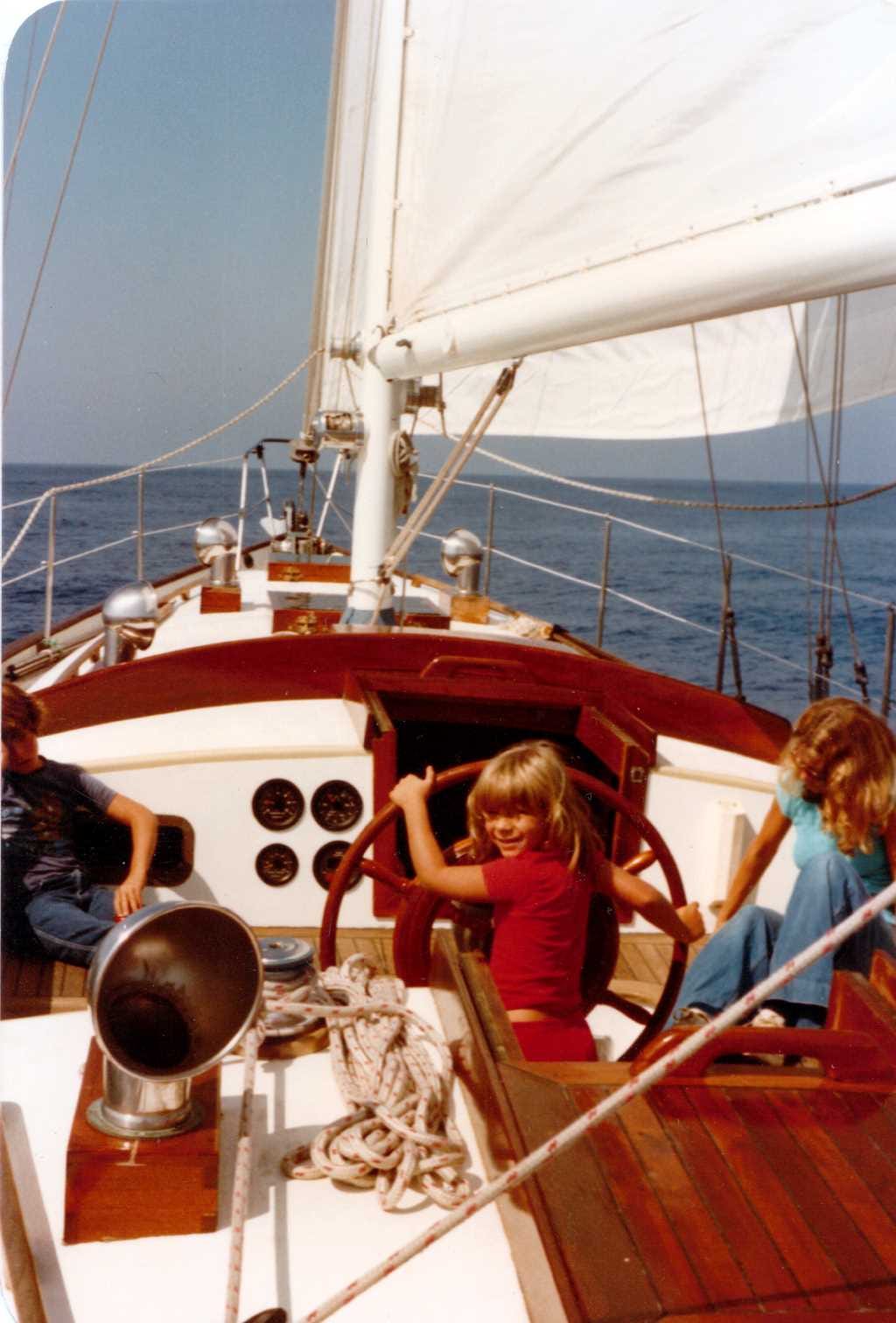
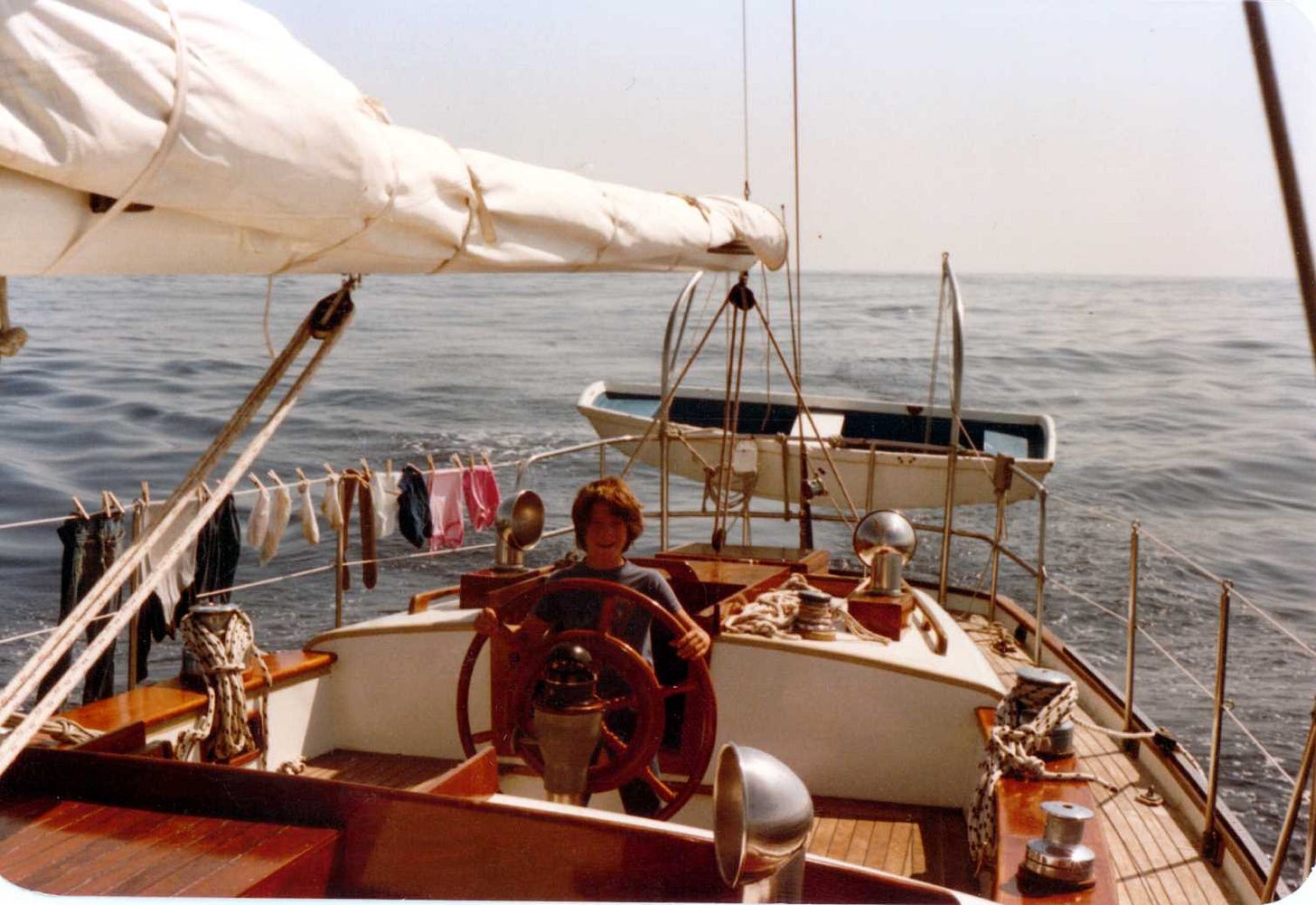
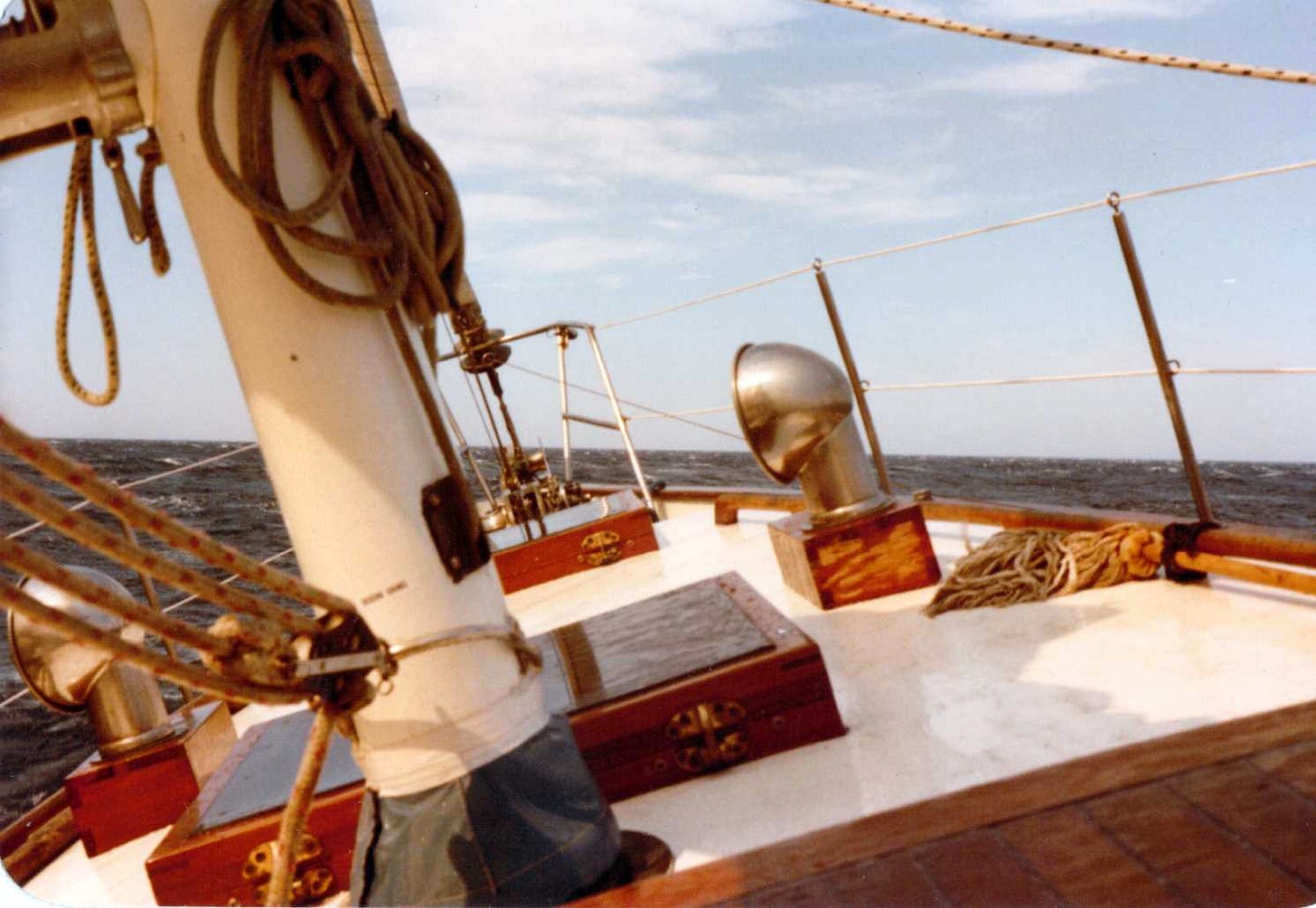
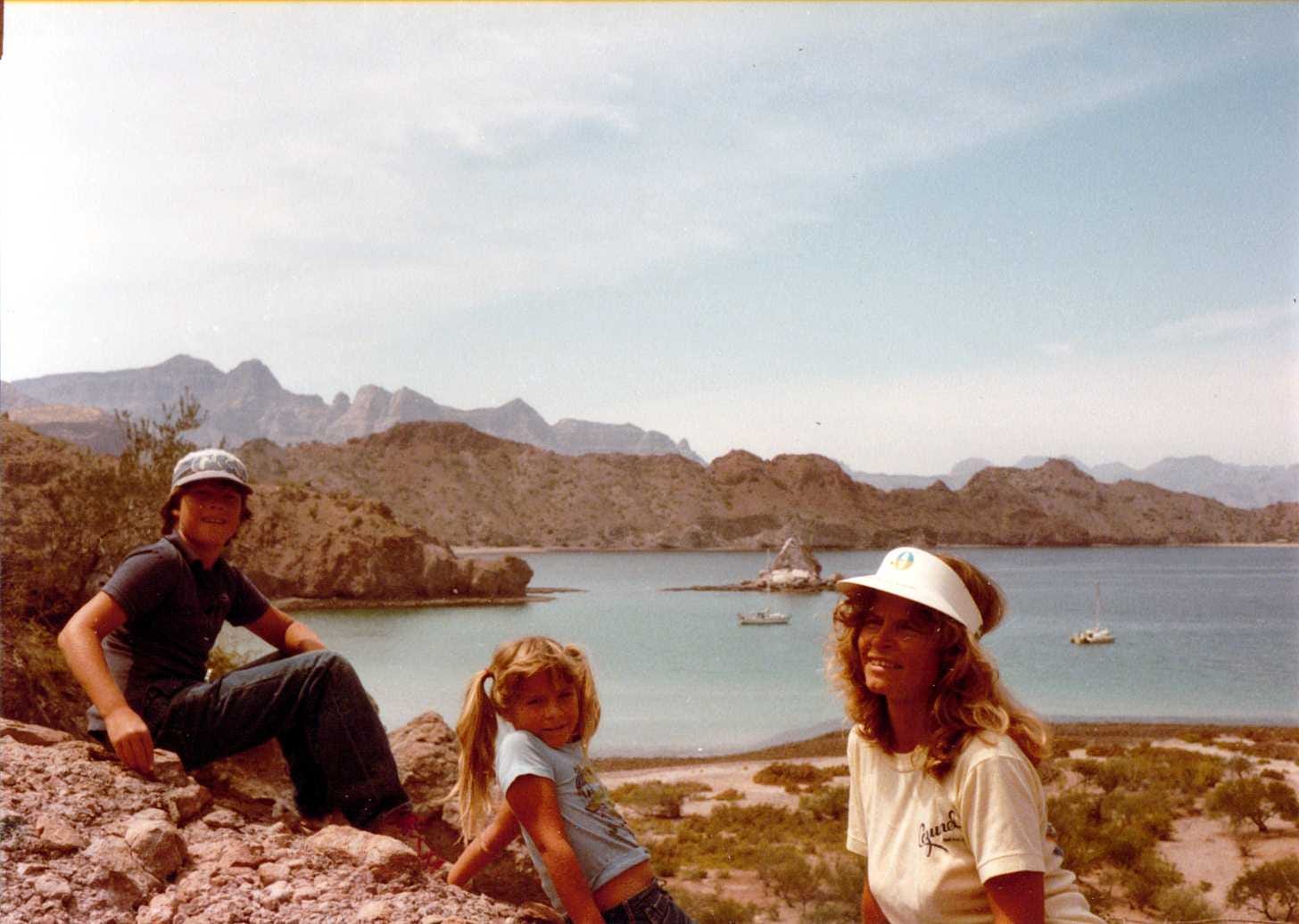

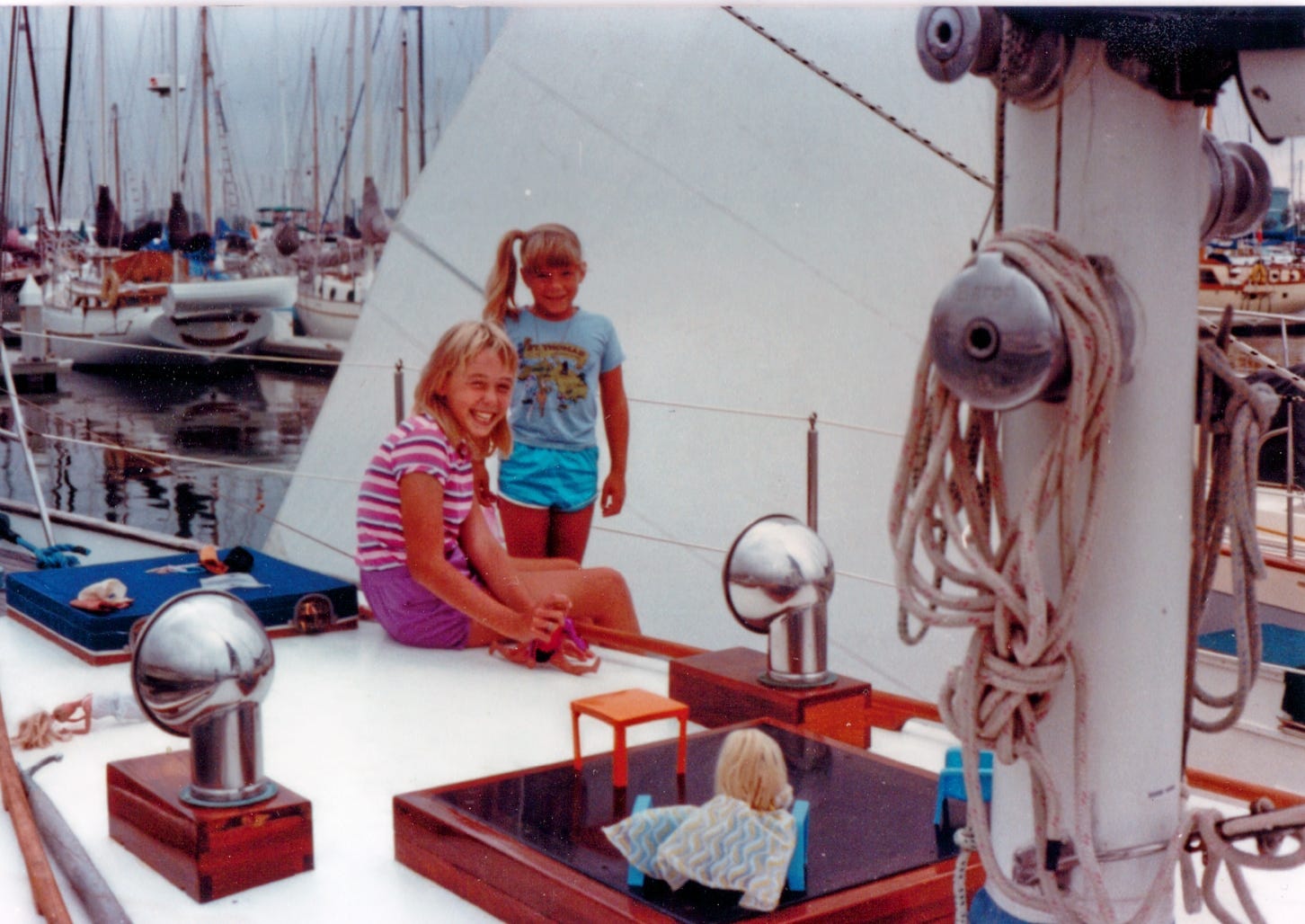
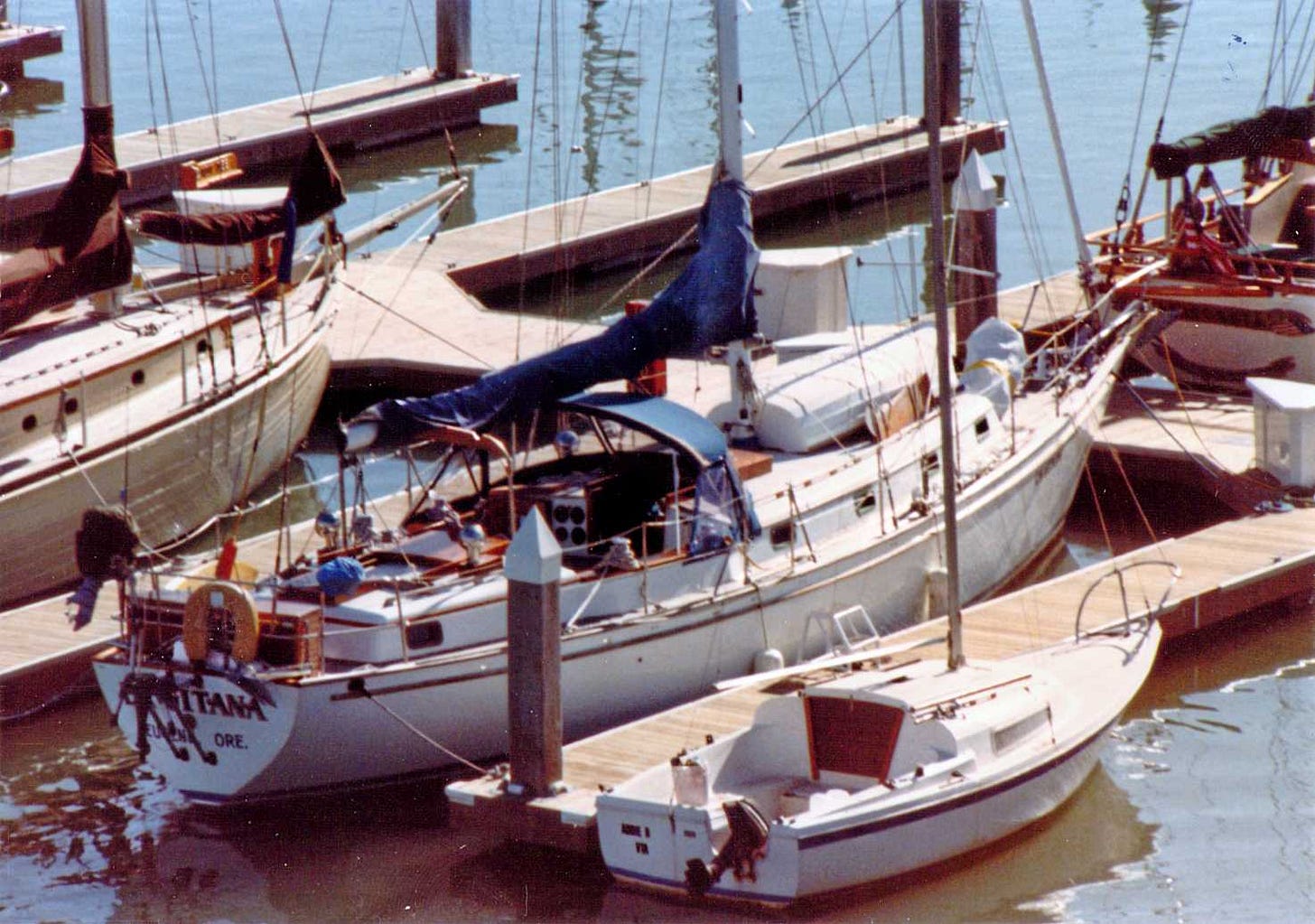
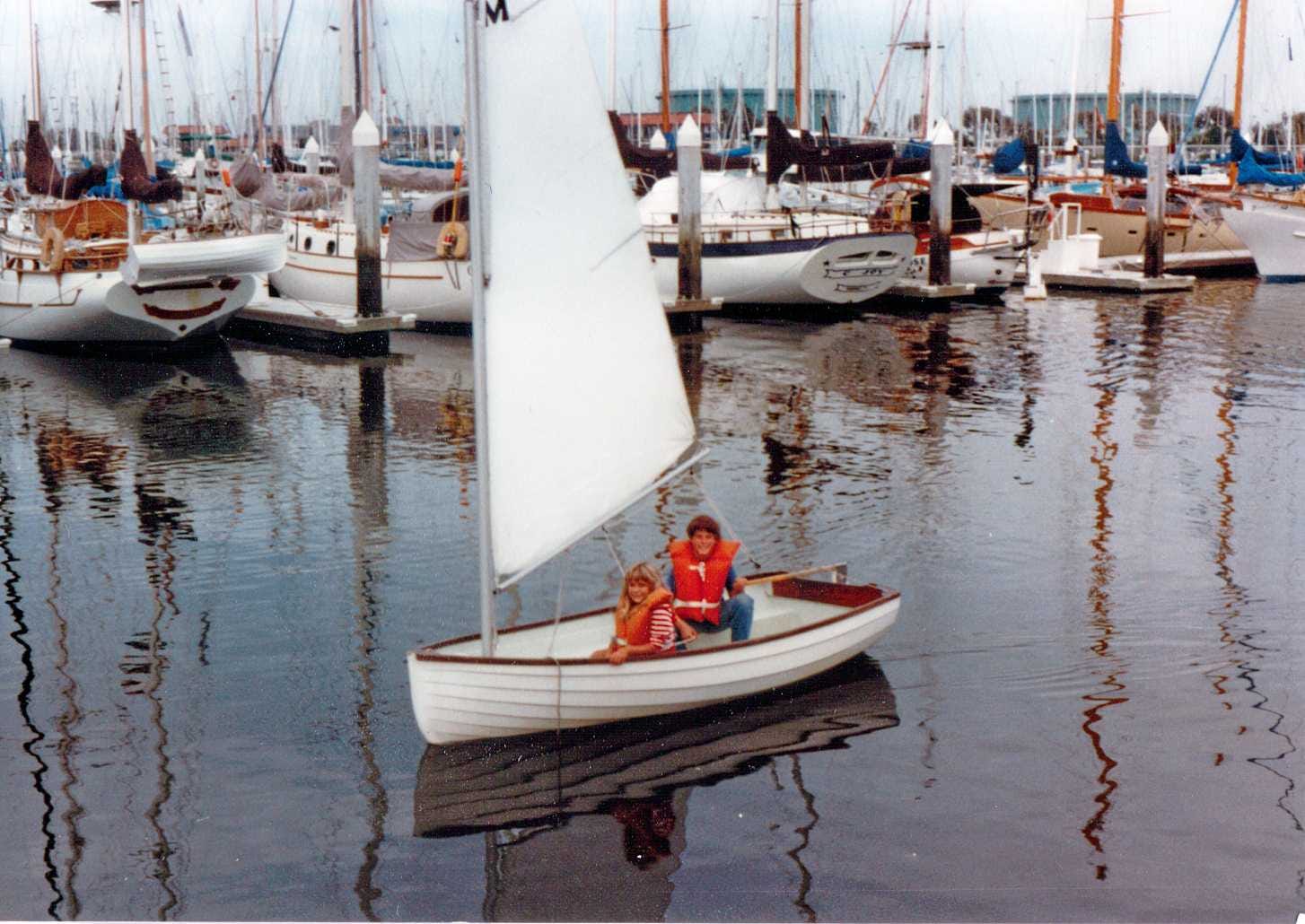
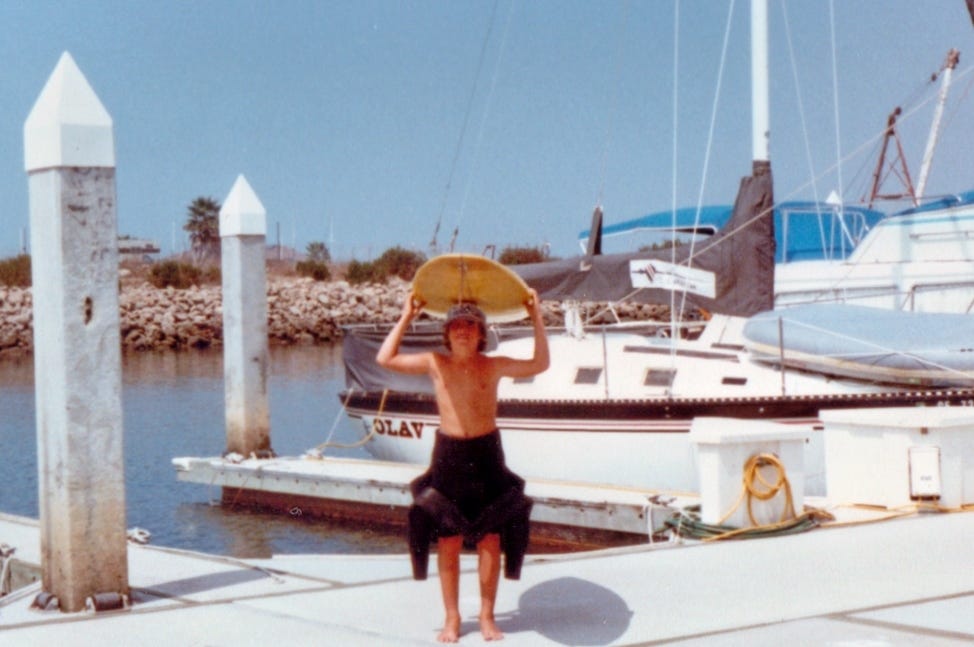
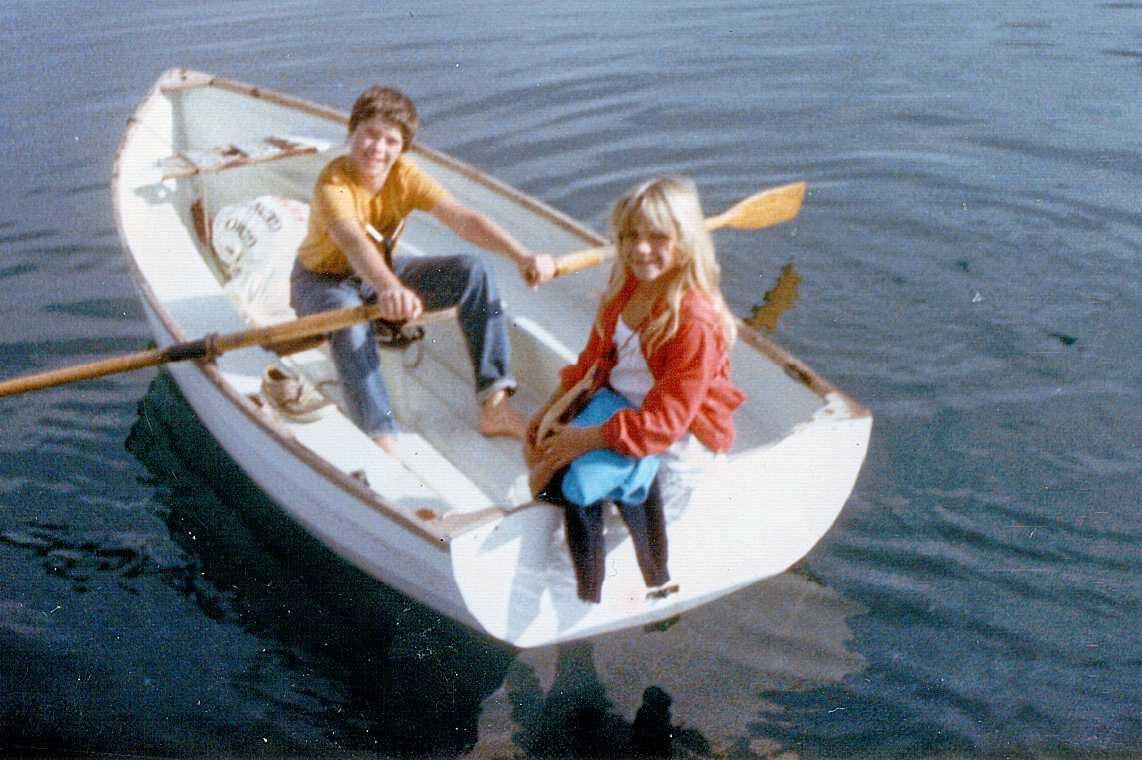


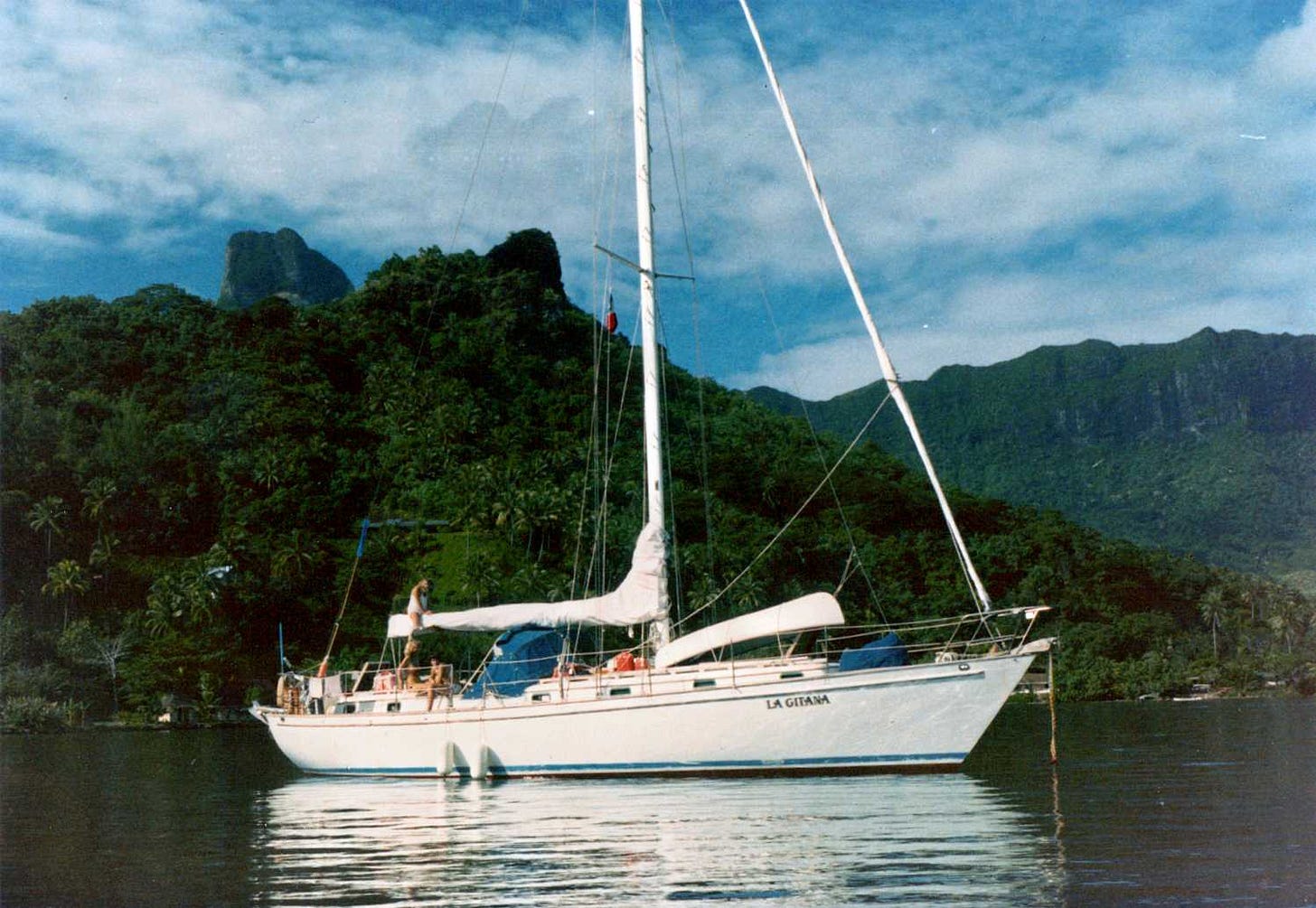
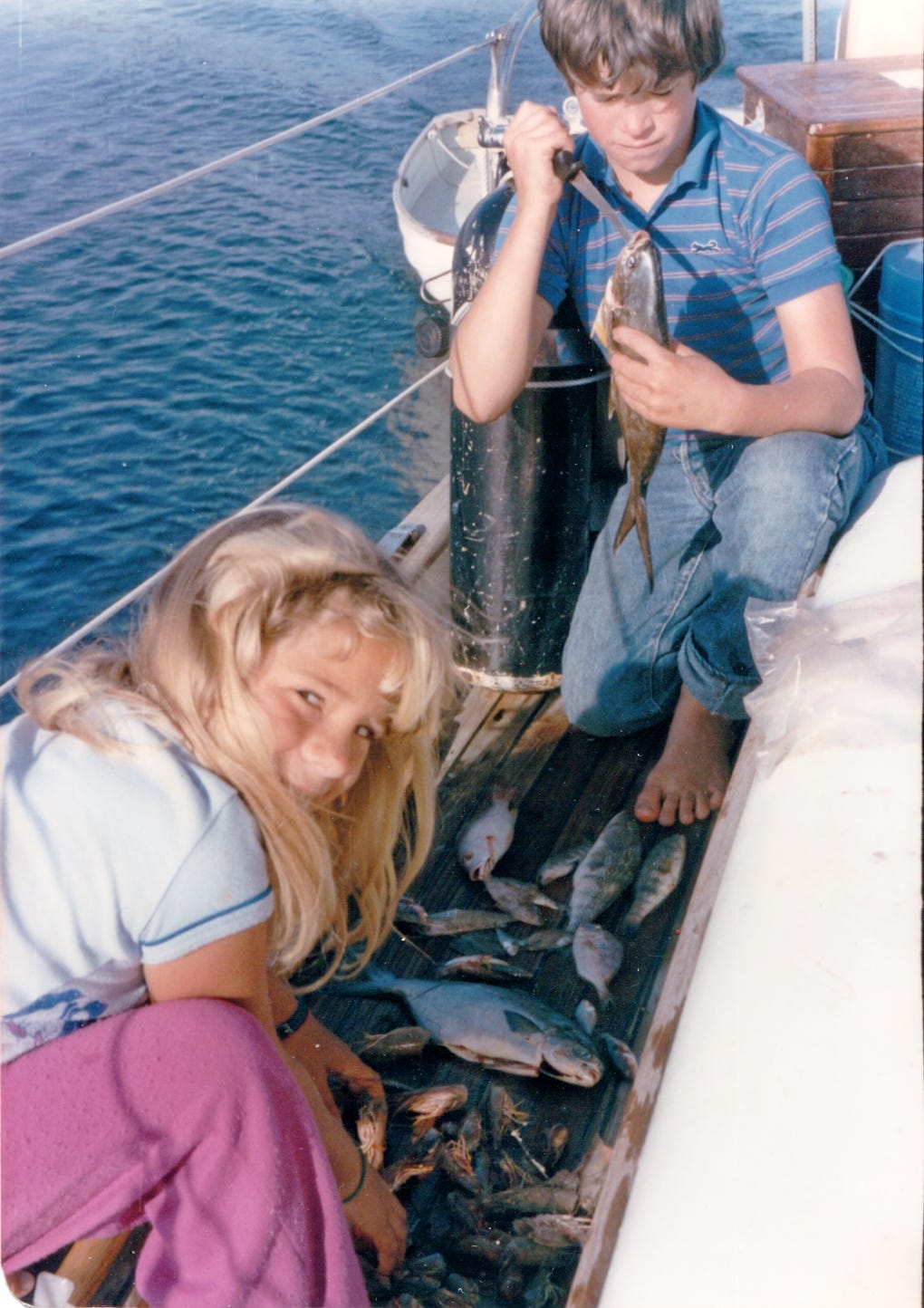
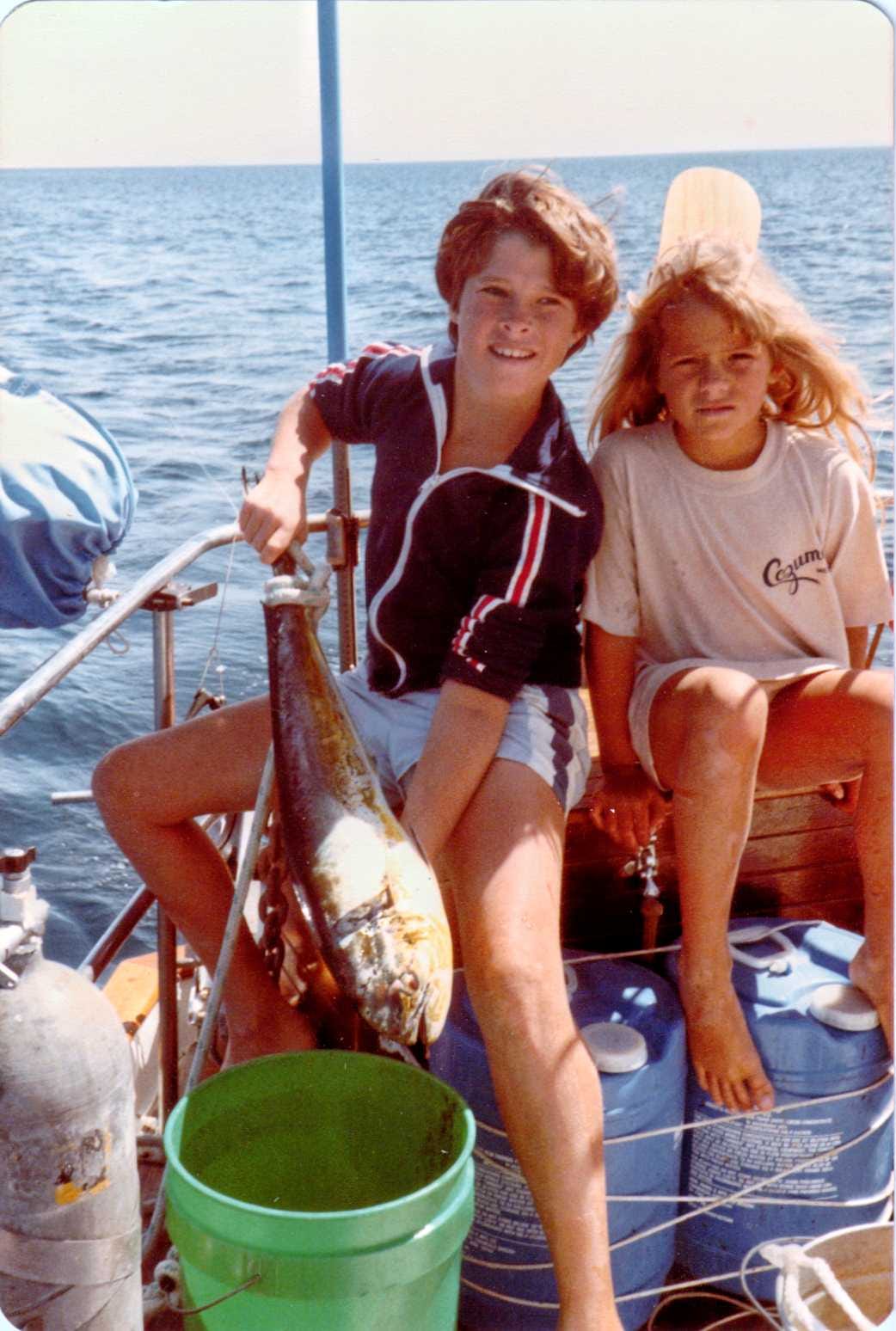
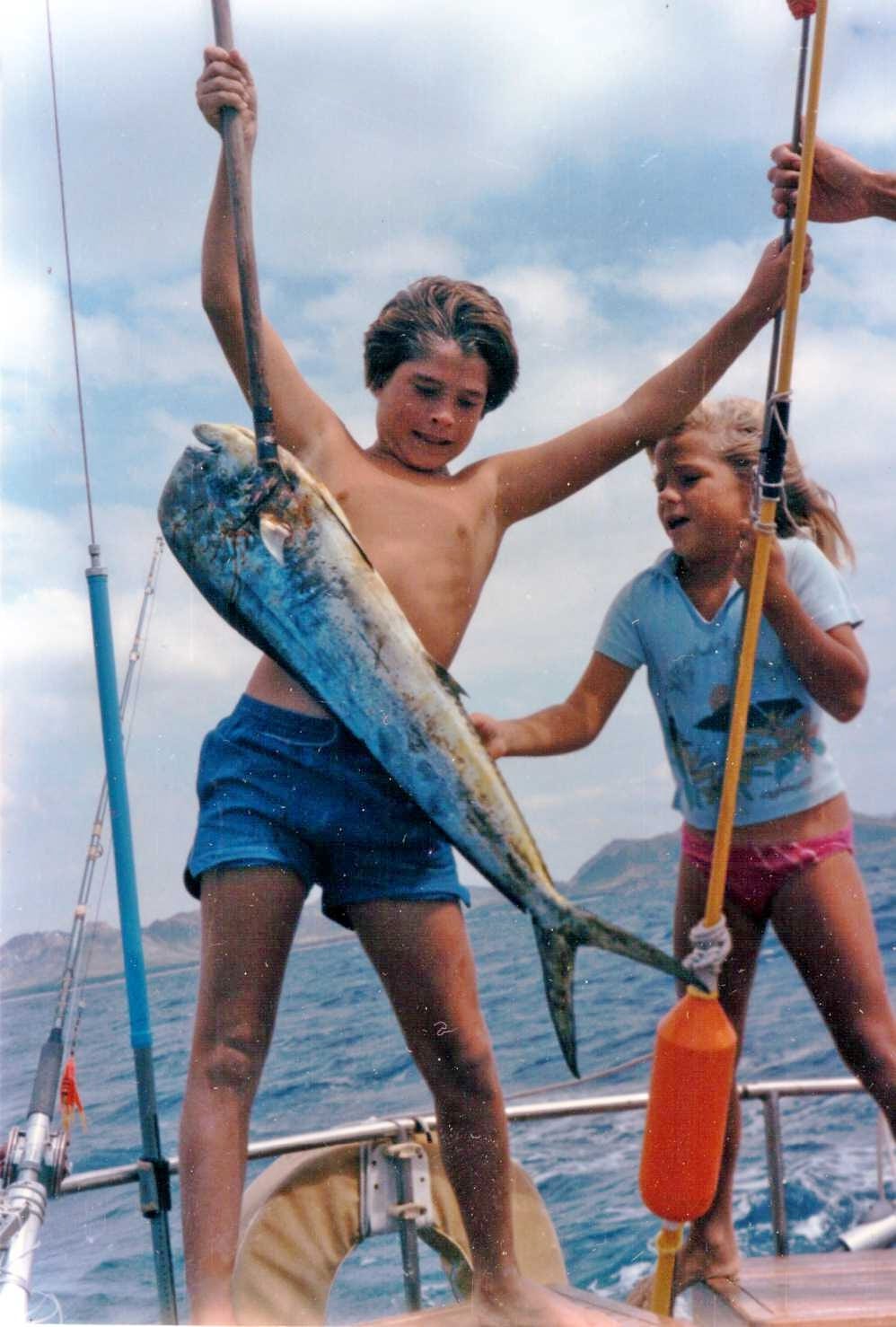
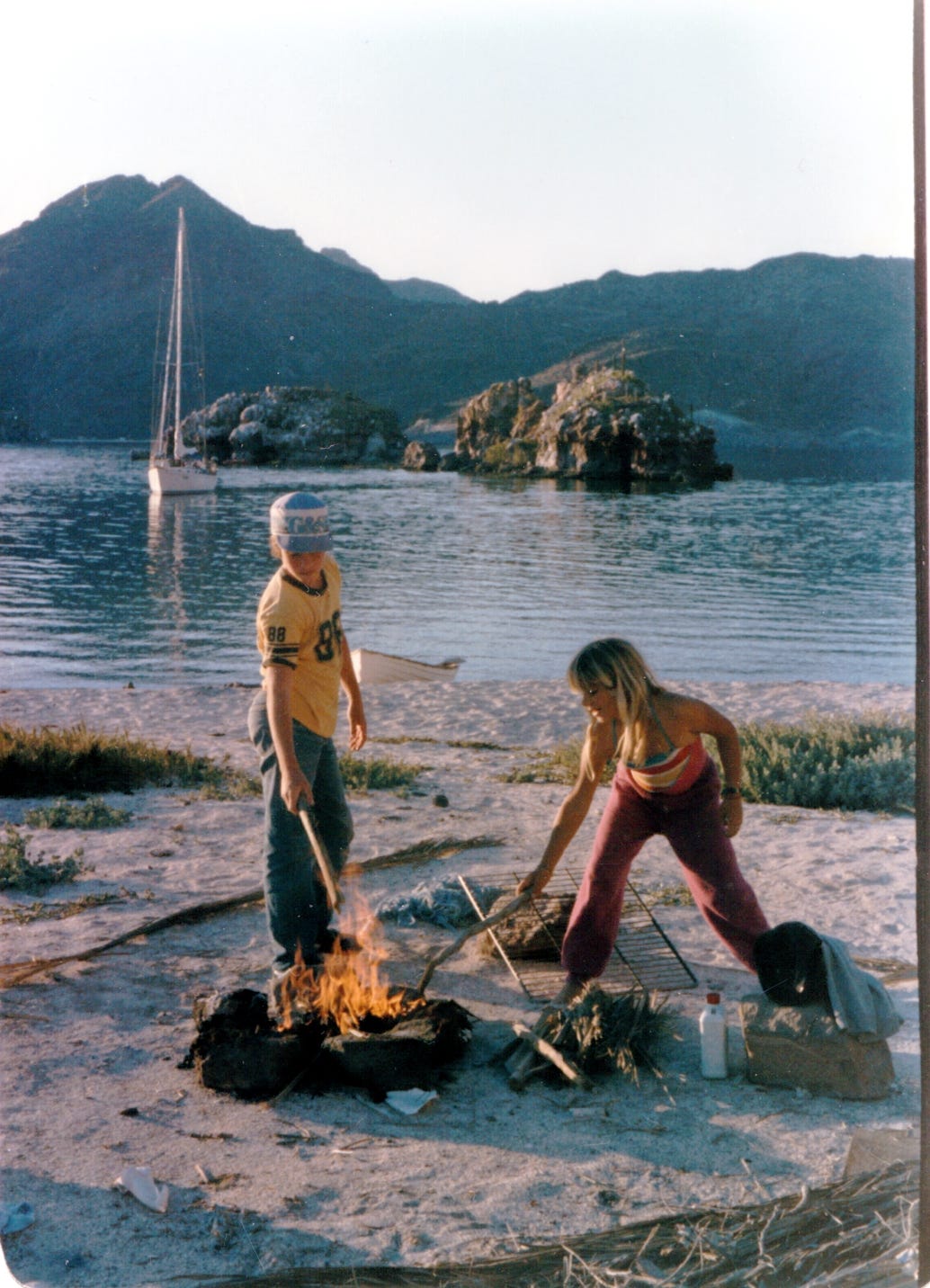

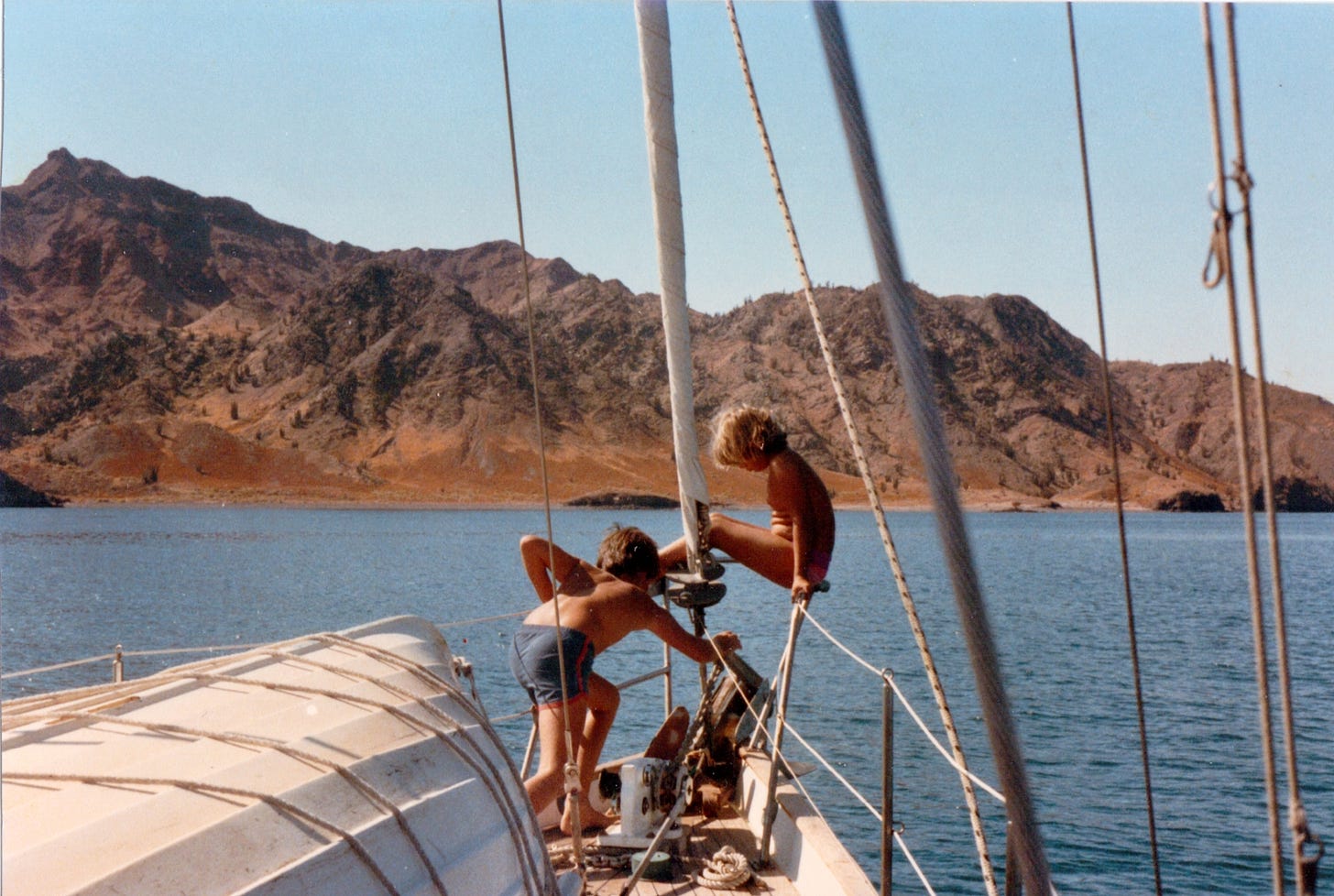
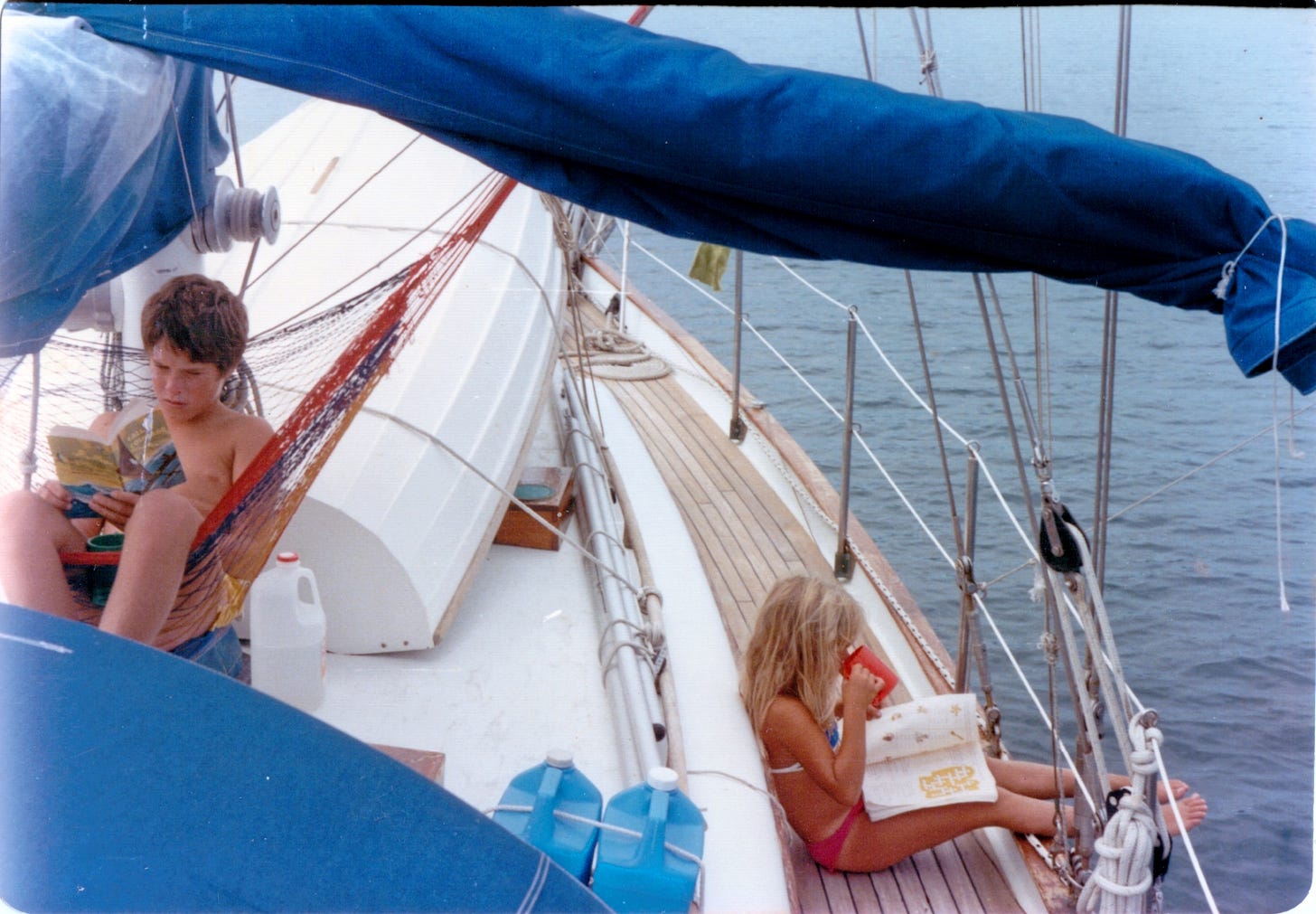
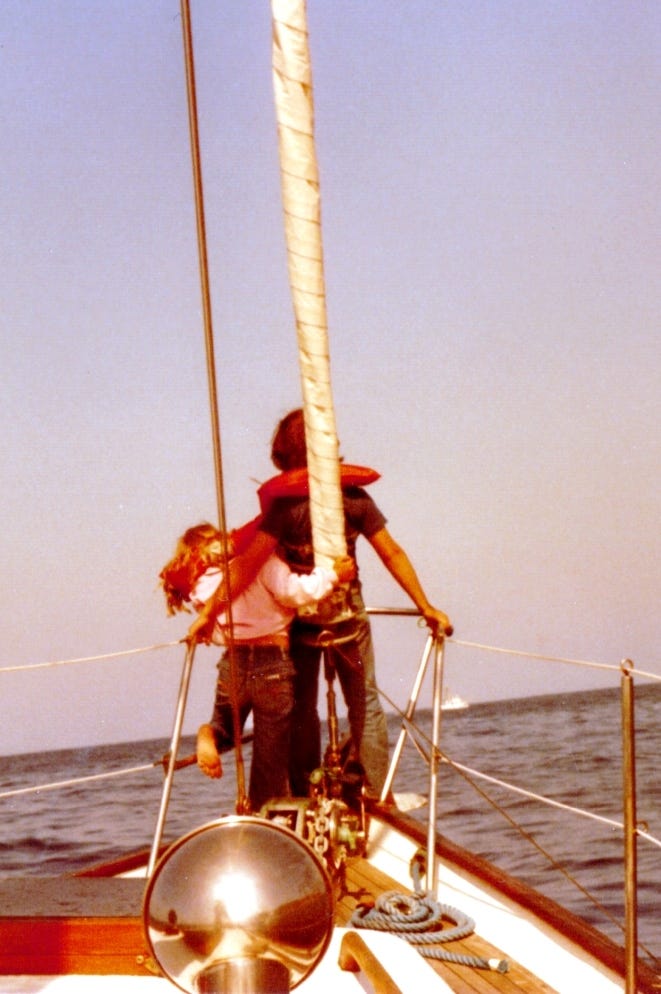
Deborah- What a beautiful personal and insightful account on sailing and family. I’m with you that life at sea would teach them things they wouldn’t have otherwise known. My ancestors travel by boat most days so I’m not surprised at all that it has deep and impactful benefits.
What a phenomenal experience! You gave your children something they will always cherish. I wondered how they’d fare at sea after your previous post. But I forgot that children adapt easily to change. Your kids were the perfect age for this once in a lifetime adventure, Deborah. And La Gitana!! What a beauty! Center cockpits are the best. My favorite anyway. So glad you’ve written this down and shared it here.